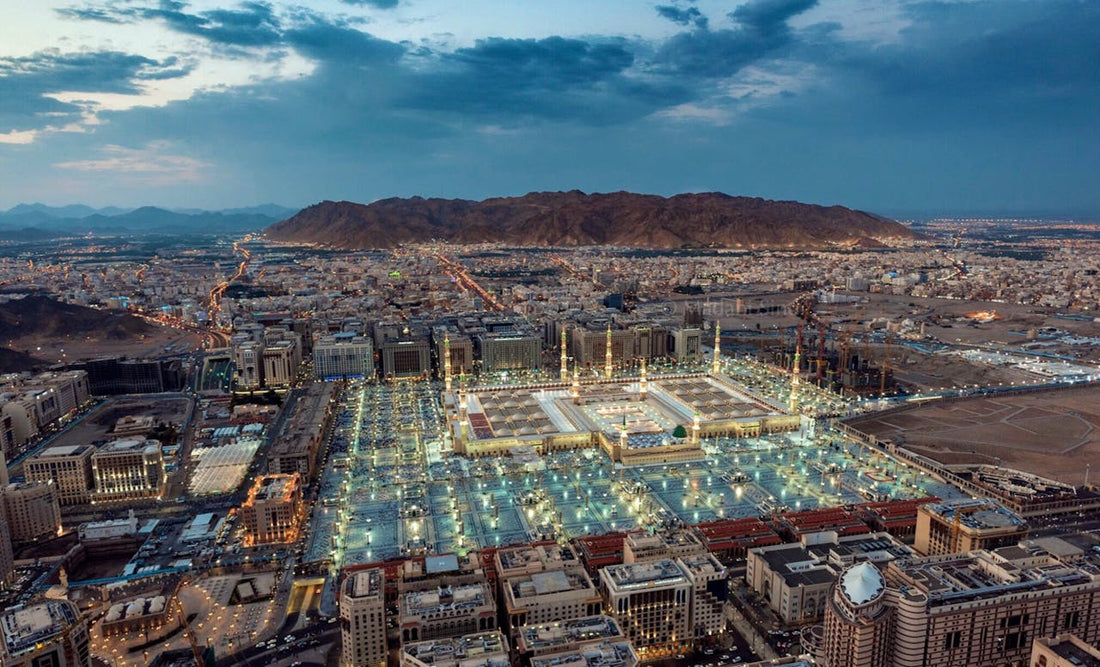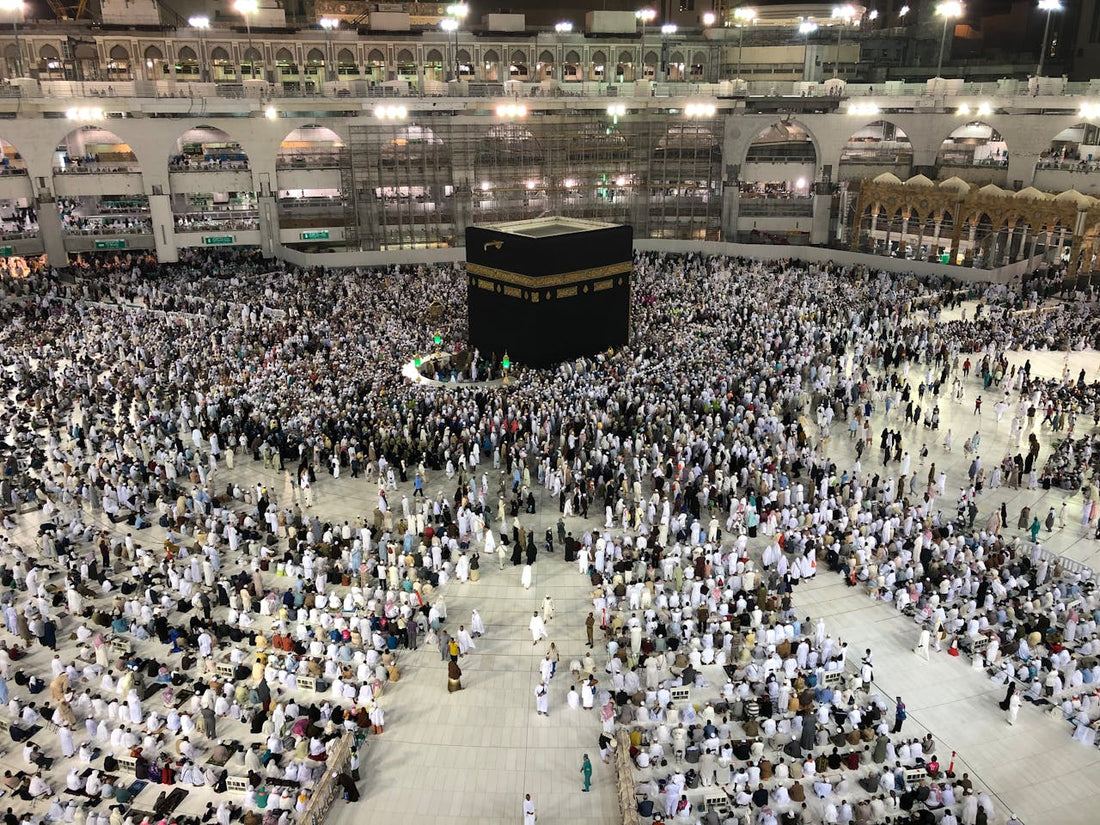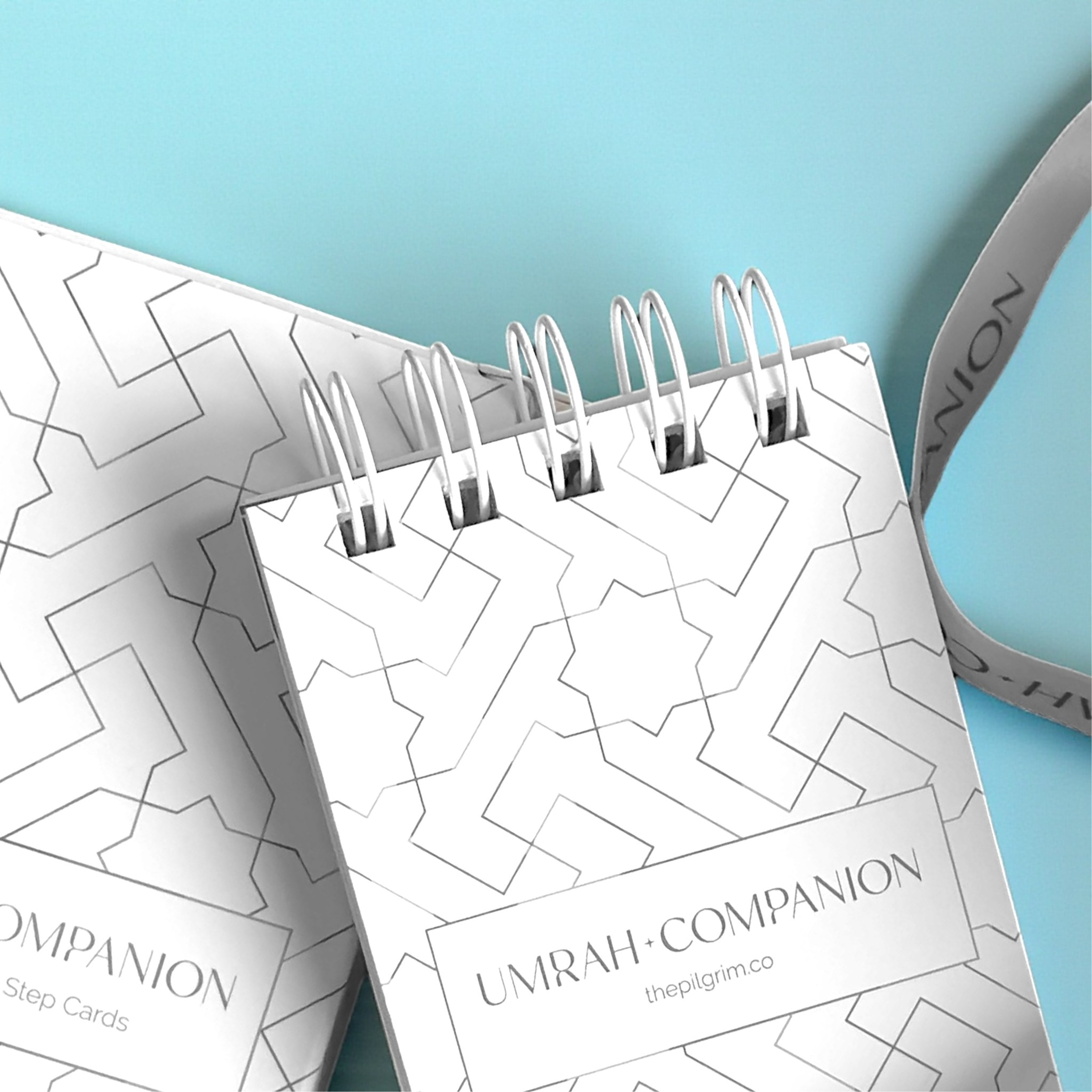The Kiswa Factory in Makkah is where the covering of the Kaaba is made.
This covering is known as the Kiswa.
A new Kiswa is made every year and placed on the Kaaba.
Many Muslims are interested in seeing where and how this work takes place.
This guide explains what Kiswa is, where the factory is located, how the cloth is made, Kiswa factory distance from Makkah, and how to plan a visit.
What is the Kiswa of the Kaaba?
The Kiswa, also known as Ghilaf e kaaba, is the black silk cloth that covers the Kaaba.
Quranic verses are stitched into it using gold and silver thread. It is placed over the Kaaba once a year.
The Kiswa is replaced during the Hajj season.

Where is the Kiswa Factory Located?
The Kiswa Factory is located in the Umm Al-Joud area of Makkah.
It is around 10 kilometers away from Masjid al-Haram. Visitors can reach it by taxi or car.
History and Evolution of the Kiswa Factory
The Kiswa has a long history, and over the years, the way it is made has changed a lot.
From being produced outside of Saudi Arabia to becoming a fully local process, the journey of the Kiswa is evidence of the brilliance of hand embroidery and Islamic calligraphy.
First Saudi Kiswa Factory
Before 1927, the Kiswa was made in Egypt and sent to Makkah by caravan or ship.
Each time the cloth arrived, there used to be a ceremony in which it was placed on the Kaaba.
Many noticed that the long journey would sometimes cause damage to the cloth.
When King Abdulaziz saw this, he wanted the Kiswa to be made inside the Kingdom.
In 1927, the first Kiswa Factory was established in Makkah. It started with a small group of workers.
They were trained to weave silk, dye it, and add Qur'anic verses.
Umm Al-Joud Kiswa Factory Today
The current factory is in the Umm Al-Joud area. It was opened in 1977 to replace the earlier, smaller factory.
It handles all work related to the Kiswa today.
The new space is large enough for the full process. The factory has separate rooms for each task.
Staff members are trained over time and work under supervisors.
The entire process is handled by engineers, designers, weavers, and calligraphers.
There is also an inspection team to make sure nothing is missed before the cloth is taken to the Kaaba.
How the Factory Has Modernised Over Time
When the first factory opened, workers used manual tools.
Weaving was done on wooden looms. Embroidery took longer and required teams to sit in shifts.
Over the years, the factory added machines to speed up the weaving and dyeing steps. Today, electronic weaving machines help prepare the fabric.
Computers are used to plan the patterns and verses that go on the cloth. This makes it easier to ensure the measurements are accurate.
Still, workers do the final stitching of Qur'anic verses by hand. Each gold and silver thread is carefully placed.
This mix of machines and handwork helps maintain the quality and detail while keeping the traditional steps alive.
How is the Kiswa Made? Inside the Manufacturing Process
Making the Kiswa involves many steps. It takes time and trained workers.
Materials Used in the Kiswa
The Kiswa is made of black-dyed silk. The silk is imported. Gold and silver threads are used to stitch the Quranic verses.
Dyeing and Weaving the Cloth
Silk is first dyed black. Then it is woven into long panels. These panels become the base of the Kiswa.
Embroidery, Printing & Gold Thread Work
Quranic verses are first printed on the panels. Then workers stitch the verses using gold and silver thread. This process is done by hand.
Sewing and Final Assembly
Once panels are ready, they are stitched together.
This step forms the full cloth that will cover the Kaaba. It is made to match the shape and size of the Kaaba.
What Happened to the Old Kiswa?

The old Kiswa is removed before placing the new one. It is cut into pieces.
These pieces are either stored or given to officials, organizations, and museums.
The Kiswa Annual Changing Ceremony During Hajj
Before the Kiswa is replaced, a team of workers prepares everything needed for the ceremony.
They change the old cloth with the new one without causing any damage to the Kaaba.
Why the Kiswa is Raised During Hajj
During the Hajj season, the lower part of the Kiswa is raised.
A white cloth is placed underneath. This prevents damage from crowds.
When the Kiswa is Changed
The Kiswa is changed on the 9th of Dhul-Hijjah, which is the Day of Arafat.
A team begins the change early in the morning before Fajr prayer.
How Much Does the Kiswa Cost?
The Kiswa costs about 25 million Saudi Riyals.
This includes the cost of silk, gold and silver thread, and labor.
Can Anyone Visit the Kiswa Factory?
Yes, visitors are allowed.
However, you need to make an appointment in advance. Group visits and individual tours are both possible.
Visit Timings:
The factory is open for visits Monday To Thursday 8:00 AM to 11:00 AM.
How to Get an Appointment to Visit the Kiswa Factory
You can book a visit by contacting the factory or going through tour operators in Makkah.
Some tours include the factory as part of their package. Booking ahead is advised.
Is There an Entry Fee for the Kiswa Factory?
No, the Kiswa factory entry fee is free.
How Far is the Kiswa Factory from Makkah?
The factory is about 10 kilometers from the Grand Mosque.
The trip takes around 20 to 25 minutes by car.
Frequently Asked Questions
How is the Kiswa preserved after use?
It is cut into parts and stored or gifted.
Why is the Kiswa black in colour?
The black color is durable and can withstand the contact of millions of pilgrims who visit every year.
Is the Kiswa factory open to the public year-round?
It depends on the time of year and official guidelines. It's best to check before planning a visit.
Can foreigners visit the Kiswa Factory?
Yes, foreigners can request a visit as long as they have an appointment.
How long does a tour take at the factory?
Tours usually take between 1 and 2 hours.
Conclusion – Kiswa Factory
The Kiswa Factory shows how much care goes into preparing the cloth that covers the Kaaba.
Visitors can learn how the Kiswa is made, from silk dyeing to gold embroidery. If you plan to visit Makkah, consider adding the factory to your trip.
If you're looking for tools to help plan your journey, sign up for our free version today and keep everything in one place.




